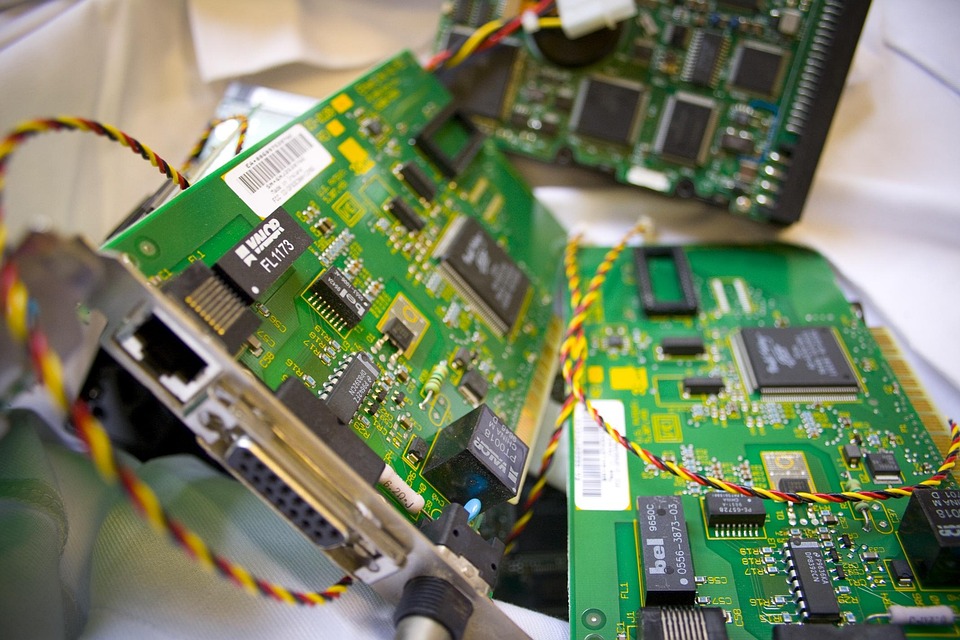Plastic Pollution: Innovative Solutions for a Global Crisis
Introduction
Plastic pollution has emerged as one of the most pressing environmental challenges of our time. With millions of tons of plastic waste entering our oceans each year, the devastating impacts on marine life, human health, and ecosystems are more pronounced than ever. According to a 2020 report by the World Economic Forum, if plastic production and use grow as currently planned, by 2030, the annual flow of plastic into the ocean could nearly triple to 29 million metric tons. This statistic serves as a clarion call for immediate and innovative solutions to mitigate plastic pollution.
In this article, we will explore the various dimensions of plastic pollution, including its sources and impacts, current initiatives to combat the crisis, and groundbreaking innovations that hold promise for a cleaner future.
Understanding Plastic Pollution
What is Plastic Pollution?
Plastic pollution refers to the accumulation of plastic products in the environment, particularly in our oceans and waterways. These plastics can be categorized into two groups: microplastics (tiny plastic particles less than 5mm) and macroplastics (larger plastic items such as bottles, bags, and packaging). The ubiquity of plastic is alarming, as it is used in countless applications, from packaging and textiles to medical devices and electronics.
The Sources of Plastic Pollution
The origins of plastic pollution are multifaceted. Key contributors include:
-
Single-use Plastics: Items such as straws, cups, and shopping bags are often used fleetingly but last for centuries in the environment.
-
Industrial Activities: Production processes can result in plastic pellets and powders spilling into waterways.
-
Waste Management Failures: Inadequate recycling and waste disposal systems lead to significant amounts of plastic waste entering the environment.
- Consumer Behavior: Lack of awareness and convenience often drive individuals towards single-use plastics without considering alternatives.
Environmental and Health Impacts
Plastic pollution has dire consequences for both the environment and human health. Marine animals often ingest microplastics, mistaking them for food, leading to physical harm and even death. These plastics can also enter the human food chain through seafood consumption. Studies have shown that plastic pollutants can release harmful chemicals, contributing to various health issues such as hormonal disruptions, reproductive issues, and increased cancer risks.
Current Initiatives and Efforts
Global Treaties and Agreements
The international community is increasingly recognizing the need for collaboration to tackle plastic pollution. The 2018 United Nations resolution to create a global treaty on plastic pollution is a step in the right direction. This treaty aims to establish binding commitments from countries to reduce plastic waste and enhance recycling efforts.
National Policies
Countries are implementing their strategies to combat plastic pollution:
-
Ban on Single-Use Plastics: Countries like France and Canada have enacted laws prohibiting or limiting single-use plastic items.
-
Extended Producer Responsibility (EPR): Policies that hold manufacturers accountable for the entire lifecycle of their products encourage more sustainable design choices.
- Incentives for Recycling: Financial incentives for businesses and individuals to recycle can significantly increase recycling rates.
Community Engagement
Local communities play a vital role in the fight against plastic pollution. Grassroots movements, beach cleanups, and educational campaigns have raised awareness and inspired action at the individual level. The Surfrider Foundation, for instance, mobilizes volunteers to remove trash from beaches while advocating for policy changes.
Innovative Solutions
Biodegradable Alternatives
Biodegradable plastics, derived from natural materials such as corn starch or sugarcane, offer a promising alternative to conventional plastics. These materials are designed to break down more quickly in the environment, mitigating long-term pollution. Companies like BioBag are at the forefront of this innovation, producing compostable bags and food storage solutions.
Upcycling
Upcycling transforms waste into new products, creating added value while reducing the demand for virgin materials. Numerous artists and businesses are repurposing ocean plastics into items like jewelry, handbags, and furniture. An example is Ocean Sole, which crafts vibrant art and financial support for ocean conservation through recycled flip-flops found on beaches.
Advanced Recycling Technologies
Emerging technologies are revolutionizing plastic recycling. Traditional mechanical recycling is limited in the types of plastics it can process. Advanced recycling technologies, such as chemical recycling, can break down plastics into their fundamental components, allowing them to be reused indefinitely, thus closing the loop in the plastic lifecycle. Companies like Plastic Energy are pioneering technologies in this space.
Education and Behavioral Change
Innovative educational campaigns can catalyze significant behavioral changes among consumers. Programs that highlight the environmental impacts of plastic pollution and promote sustainable alternatives can empower individuals to make conscious choices regarding their plastic use. Collaborations between schools, NGOs, and businesses can amplify these messages and foster a culture of sustainability.
Circular Economy Approaches
The circular economy model, which emphasizes the reuse and recycling of resources, presents a comprehensive solution to plastic pollution. In this system, products are designed for longevity, disassembly, and reusability. Companies like Patagonia have adopted circular practices by encouraging customers to repair and recycle their gear, thereby reducing their plastic footprint.
Case Studies
The Ocean Cleanup Project
Founded by Boyan Slat, The Ocean Cleanup is a nonprofit organization focused on removing plastic pollution from the world’s oceans. Their innovative system deploys floating barriers in ocean gyres, collecting debris while allowing marine life to pass underneath. The project aims to drastically reduce the number of plastics in vulnerable marine areas over the next decade.
Plastic Bank
Plastic Bank is a social enterprise that addresses plastic pollution while providing economic opportunities for impoverished communities. By creating a network of collection points, individuals can exchange plastic waste for money or other essentials, turning trash into currency. This model not only reduces waste but also incentivizes community involvement in waste management.
Loop: Redefining Consumption
Loop is an innovative platform that promotes the reuse of everyday items. The service partners with major brands to provide refillable containers for common products, such as yogurt and detergent. Customers receive products in durable packaging, which can be returned for cleaning and reuse. This initiative significantly reduces single-use packaging and fosters sustainable consumer habits.
The Role of Technology and Research
Smart Waste Management Systems
Smart waste management systems utilize technology to optimize waste collection and recycling processes. Sensors can monitor waste levels in bins, allowing waste management authorities to deploy resources more efficiently. Such technologies can reduce operational costs and enhance recycling rates, thereby helping mitigate plastic pollution.
Research Initiatives
Ongoing academic research aims to provide insights into the plastic pollution crisis and potential solutions. Studies exploring microbial degradation of plastics, alternative materials, and innovative recycling methods are essential. Collaborations among universities, government agencies, and private industry can lead to breakthroughs that inform policy and drive innovation.
The Importance of Policy and Regulation
While innovative solutions are vital, systemic change requires strong policies and regulations. Governments have a pivotal role in:
-
Establishing Standards: Implementing standards for plastic production and recycling can elevate industry practices while ensuring environmental protection.
-
Promoting Research and Development: Investments in R&D for sustainable materials and recycling technologies can accelerate advancements in combating plastic pollution.
- Encouraging Transparency: Mandating disclosure of companies’ plastic footprints can compel businesses to take responsibility for their environmental impact, fostering accountability and competition for sustainability.
Conclusion
Plastic pollution represents a global crisis that demands immediate and concerted action. While the challenges are significant, a variety of innovative solutions exist—offering hope for a cleaner, sustainable future. From biodegradable materials to advanced recycling technologies, we are witnessing a surge in creativity and commitment to addressing this pressing issue. However, for these initiatives to achieve their full potential, active participation from individuals, communities, corporations, and governments is crucial.
The fight against plastic pollution is not solely about reducing waste; it’s about reimagining our relationship with materials and fostering a culture of sustainability for generations to come. As we navigate this crisis, it is clear that innovative, multifaceted approaches hold the key to restoring the health of our planet and securing a better future for all.
Modern Footnote Sources
- World Economic Forum. (2020). "The New Plastics Economy: Rethinking the Future of Plastics."
- United Nations Environment Programme. (2018). "UN Environment adopts resolution to combat marine plastic litter."
- BioBag. (2022). "Biodegradable and Compostable Products."
- Ocean Sole. (2021). "Transforming flip-flops into art and advocates for ocean conservation."
- Plastic Energy. (2021). "Chemical recycling at Plastic Energy."
- Patagonia. (2020). "Worn Wear: Patagonia’s program for repair and recycling."
- The Ocean Cleanup. (2022). "The mission of The Ocean Cleanup."
- Plastic Bank. (2021). "Plastic Bank: Turning plastic waste into opportunity."
- Loop. (2022). "Delivering the future of reusable packaging."
- European Commission. (2018). "A European Strategy for Plastics in a Circular Economy."
This article offers a comprehensive examination of the plastic pollution crisis, highlighting innovative solutions and critical initiatives that could pave the way for a more sustainable future. By merging education, research, technological advancements, and policy reform, we can make significant strides toward alleviating this global challenge.
























Add Comment